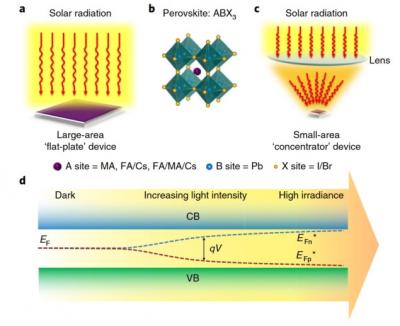Researchers from The Photovolatic and Optoelectronic Device Group at Oxford University have shown that perovskite-based concentrator photovoltaic devices (CPVs) may solve the issue of prohibitively high production costs while providing devices that perform comparably to commercialized silicon-based devices.

The devices are based on metal halide perovskites. The Oxford researchers, led by Henry Snaith, focused their search on a material that would be stable under high irradiance, and found the mixed-halide perovskite Fa0.83Cs0.17PbI2.7Br0.3 fit them best. The group found that their devices, when cooled constantly to maintain close to room temperature, retained 90% of their original efficiency after 150 hours spent under 10 Suns (10 kW/m2) of concentrated light.
In the future, much more work must be done to bring CPVs to the market ' in their article, the researchers emphasize that besides improving their fill factor, the stability of perovskites remains a concern for long-term use. Once researchers characterize the material, the development and optimization of the device and its optics will also affect the device's commercialization.

